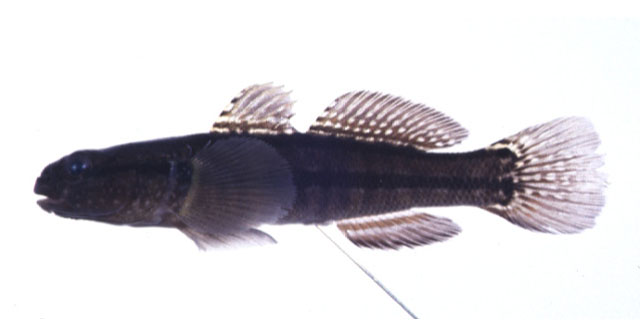| Gobiidae (Gobies), subfamily: Gobionellinae |
| 11 cm TL (male/unsexed) |
|
demersal; freshwater; brackish; marine |
| Western Pacific: South and East China, Yellow Sea and the Sea of Japan, Pacific coasts of Japan and the Philippines. Chromi Inlet in the Amur Estuary, Novgorodskaya Cove in the Bay of Pos'ete, and into the mouths and lower reaches of rivers runnning into Peter the Great Bay and into Amur Bay in Russia (Ref. 26334). |
|
Dorsal spines (total): 7-7; Dorsal soft rays (total): 12-14; Anal spines: 1-1; Anal soft rays: 10-11. Description: two dark brown interrupted stripes on body; the lower stripe runs from snout through eyes along mid-body to caudal fin; the upper stripe runs from above eyes backward to below posterior end of second dorsal fin, and continues as a saddle on peduncle; black spot on upper posterior peduncle; pale-yellow vertical stripe along the base of pectoral fine; narrow yellowish stripes along the bases of dorsal and anal fins; Number of scales along lateral line: 56; nineteen scales in transverse row; median predorsal scales 23, do not reach eyes (end about half eye diameter behind eye); no scales on opercle and preopercle; dorsal fins VI, I 13; anal fin I 11; pectoral fine: 20; pelvic fin I 5, fraenum developed; gill opening restricted, about the height of pectoral base; shoulder girdle under gill cover smooth; teeth tricuspid (Ref. 94829). |
| Found in oyster shells and crevices among barnacles and other fouling organisms (Ref. 2850). Oviparous (Ref. 205). Eggs are deposited in nests which are guarded by the male (Ref. 205). |
|
Least Concern (LC); Date assessed: 27 August 2020 Ref. (130435)
|
| harmless |
|
Source and more info: www.fishbase.org. For personal, classroom, and other internal use only. Not for publication.

